Mobile app development trends are bound to increase and continuously change in the coming years due to the high demand for user-friendly apps. Global app market revenue is estimated to reach $614.40 billion by 2026 and according to a survey by Statista, the number of smartphone users worldwide may reach 6.84 billion by 2023 and 7.69 billion by 2027. It means most of the population on Earth will be interested in apps that can make their life easy.
People prefer the convenience an app provides them with everyday tasks like booking a ride, ordering food, or scheduling doctor appointments. For entrepreneurs, such a market presents an opportunity for continued revenue to those that can quickly adopt the latest mobile app development trends.
In this article, we will dive into some key trends that are going to rule the digital space in 2023.
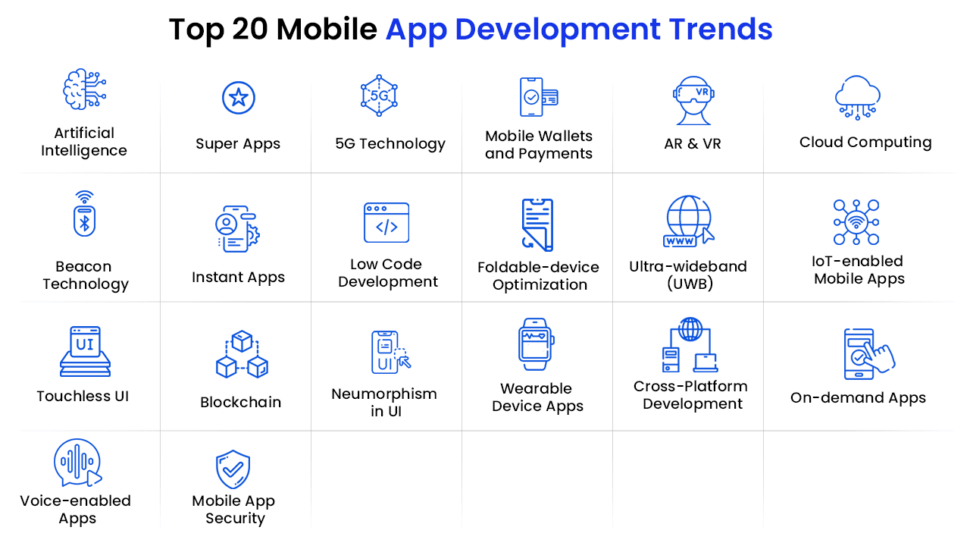
Artificial Intelligence
The implementation of artificial intelligence has increased significantly in apps and various IoT devices like smart homes and cars. According to a report by Starview Research, the artificial intelligence market is estimated to reach USD 723.64 billion by 2028.
The benefits of AI-powered mobile apps that businesses are implementing as a part of user-first experience are: improved facial recognition, secure user authentication, improved search results, automated replies, automated content personalization, speech recognition, emotion recognition, and automated reasoning.
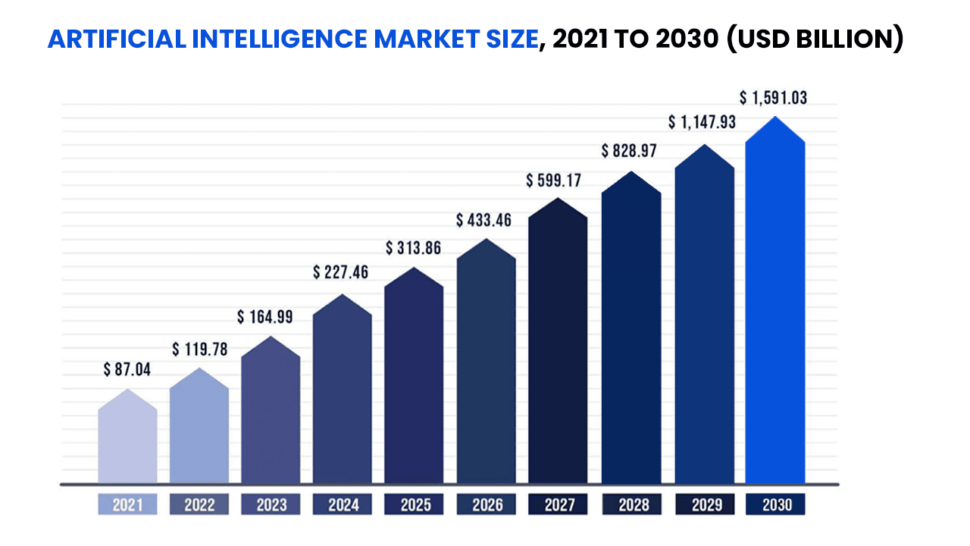
The technology is also being used to improve user authentication and data accuracy to ensure the app has good security and user experience. Through AI, you could turn an ordinary app into a quality-centric platform designed to meet user needs.
Machine Learning
Machine learning is a subset of artificial intelligence that helps apps analyze the behavior and data of users to improve search results and give personalized recommendations. ML can also help with fraud detection in fintech apps like mobile banking or P2P loans. For example, an ML-powered P2P money lending app can detect identity fraudsters that try to falsify personal information.
Additionally, data-heavy mobile app technologies can also improve predictive analysis in your app by studying current and historical user data to make predictions. For example, suppose a customer regularly places food orders on weekends using your food delivery app. In that case, ML will record and analyze this behavior to make personalized recommendations based on what the user will most likely order and like the next weekend.
Deep Learning
While machine learning is more about learning with human interaction, deep learning is about analyzing the available data to improve the accuracy and efficiency of imitated human actions. For example, in a telemedicine app DL can monitor the behavior of users to recommend doctors, treatments, or medicine, while in the same app it can be used to perform human activities like placing a Medicine Order, Schedule an Appointment, and sending a notification to users to make the payment based on past behavior of users with the same actions.
Accuracy in imitating human behavior makes deep learning highly advanced compared to ML. The deep learning market is estimated to reach $50.99 billion by 2026.
It is currently used and popular in automated driving, medical research, and industrial automation. Deep learning is a concept you must consider during app development, and discuss with your developers whether it is possible for your app. Implementing such mobile app innovations will give you an exceptional competitive advantage in functionality, design, and app marketing.
AI-powered Chatbots
Chatbots have quickly become the first stage of good customer service and support on many websites and apps. A report by Juniper Research found that chatbots will soon save consumers and businesses 2.5 billion customer service hours every year.
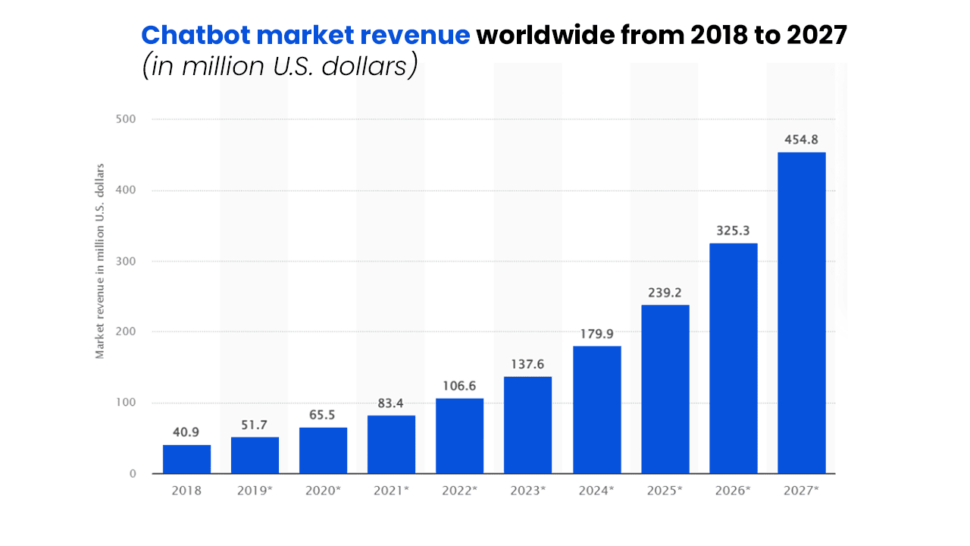
An AI-powered chatbot can analyze user needs and queries based on the available data on users to provide personalized solutions. For example, chatbots in healthcare applications will present options like Check Doctor Appointment Status, Reschedule, or Cancel Appointments to users who have booked an appointment.
Predictive Analytics
Predictive analytics is a technology powered by AI that can analyze and predict user behavior to make personalized recommendations. For example, a user who buys a raincoat, umbrella, sofa, or chair on a marketplace website/app would most likely be willing to purchase sweaters, beds, and mattresses on the same website/app.
Predictive analytics can study online buying behavior to make product/service recommendations according to user preferences. It can prove helpful in many sectors like healthcare, weather, sports, manufacturing, and retail. The global revenue of this technology is estimated to reach $23.9 billion by 2025, which makes it a lucrative decision for any app entrepreneur.
5G Technology
The 5G technology can significantly increase the efficiency of mobile apps by improving the performance of its UI elements. Many countries have already adopted and implemented this technology in their devices. A survey by Statista found that the number of 5G users worldwide could be 5 billion by 2026.
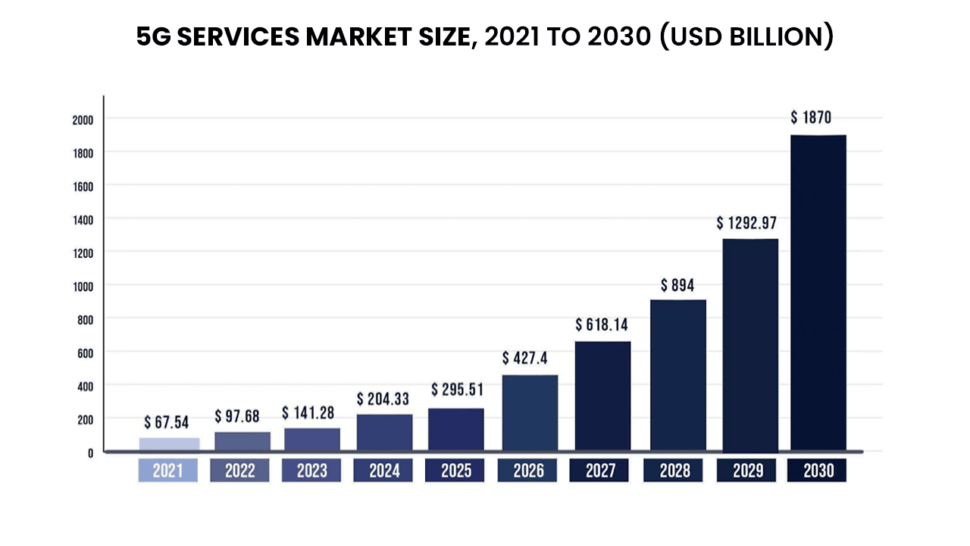
Benefits of 5G in Mobile Apps
- Faster Downloads and Page Loading Time
- 10x Decrease in Latency
- Faster Payments
- Improved AR/VR Performance
- Faster Data Transfer
- Improved App Functionality
- Improved Response Time
- Better Video Resolutions (Video Streaming Apps)
5G benefits lead to a highly convenient user experience in mobile applications, which can lead to increased customer conversion and retention.
AR & VR
Augmented and virtual reality in mobile apps helps showcase the products available on the app in real-life environments. AR technology enables users to check how a product like a sofa looks in their rooms by showing its digital version integrated with a phone camera, while virtual reality helps users see how an environment/product/service would look in person. For example, users can check an entire hotel room they want to book with your app through VR. Augmented and virtual reality market revenue is estimated to reach $52.05 billion by 2027.
Such technology can improve the user experience and increase revenue. On the back of it, giants like Snapchat and Amazon have already implemented AR technology in their apps. Amazon AR helps users check how a product they offer would look in a real-world environment. Google Earth VR uses satellite imagery and 3D terrain to provide a 360-degree street view to users.
Implementing augmented and virtual reality in your app is essential to ensure your app can succeed and survive in the coming years.
Beacon Technology
Beacon technology can broadcast an identifier that mobile phones can pick up to collect data that helps improve app personalization. For example, it can track buyer behavior in stores providing the same services/products as your app. This type of data integrated with AI personalizes every product and service on the app to make a sale.
Beacon technology market revenue worldwide is estimated to reach 56.6 billion by 2026 at the back of these two pivotal benefits:
User Engagement
AI and beacon-based mobile apps improve user engagement by sending notifications about their favorite products/services. For example, a restaurant delivery app could recommend a dish the user likes when they are in or near the restaurant.
Proximity Marketing
Targeted personalization for users near or in the store becomes easy with beacons. Users could get personalized recommendations about products/services that could be of most interest or use to them in the store. For example, a food delivery app can send a push notification to users with a company discount offer/coupon at a nearby restaurant. Implementing beacon technology in your app will take your app one step closer to the future of mobile app development.
Blockchain
Blockchain technology can improve the reliability of mobile apps with decentralization, transparency, better security and privacy, and tokenization. Various sectors (healthcare, banking, and insurance) can improve their reliability and security by implementing blockchain technology.
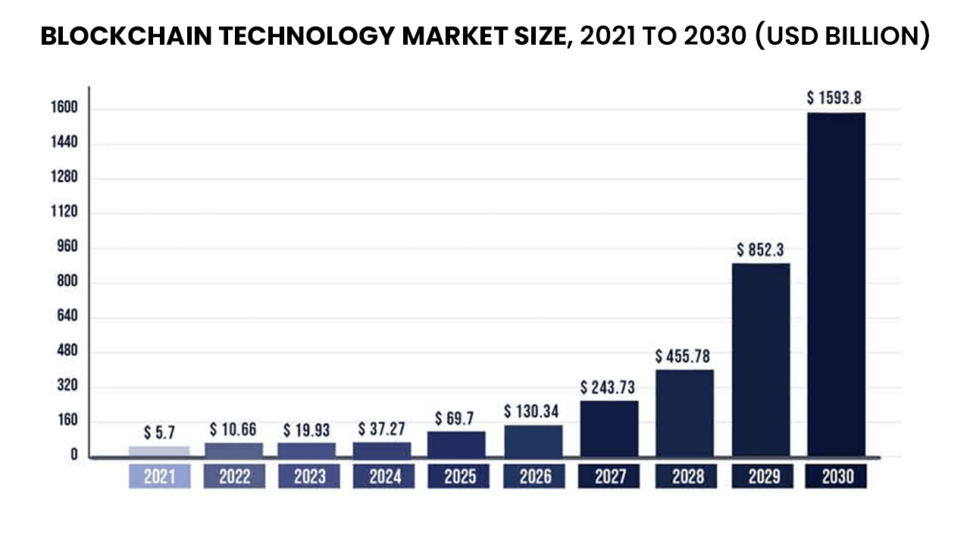
Mobile apps primarily use the technology for secure and faster payment transactions. However, a number of use cases are slowly emerging in the domain of verification, data transmission, and retail. Investing in this technology today will reap benefits in the future.
Foldable-device Optimization
Optimizing your apps for foldable devices is something you must keep in mind during the app development process. A survey by Statista found that the global foldable and rollable smartphone market revenue could reach 105 billion USD by 2025 (compared to 5.5 billion in 2020). These devices will likely gain more popularity due to the ease of use the foldable factor provides to users. You can benefit from its increased usage by optimizing the app functionality and UI/UX design for foldable devices. The better the user experience, the more foldable device users will prefer your app. The crucial thing is that you keep up with the trends in mobile app development services associated with foldable devices.
IoT-enabled Mobile Apps
IoT devices are rapidly taking over the technology market with new and innovative inventions every day. According to a report by IoT Analytics, there could be 14.4 billion IoT active connections by 2022 and 27 billion connected IoT devices by 2025.
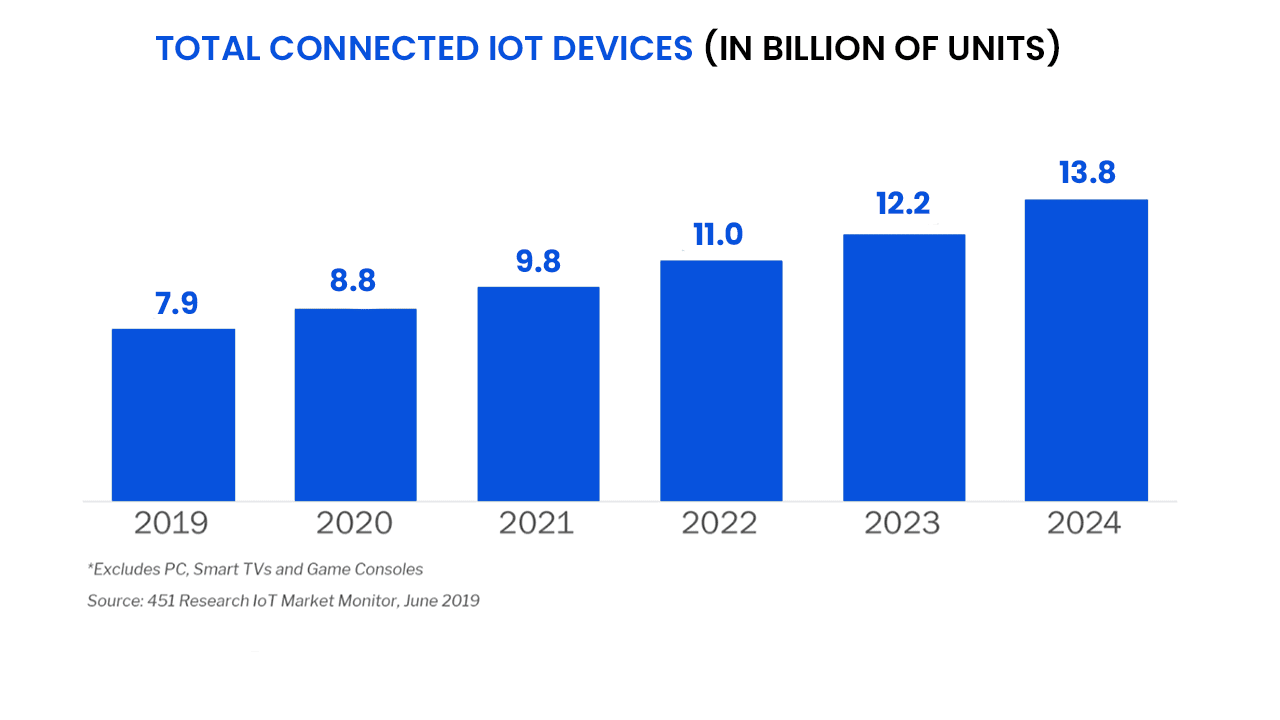
The global IoT market revenue is estimated to reach $33.74 billion by 2027 ($19.59 billion by the end of 2022). Developing apps integrated with the functionality of various IoT devices would make an impression on end users.
For example, a food delivery app that sends voice notifications about the order status through the smart home system or a telemedicine app that sends voice notifications about an upcoming doctor appointment. Such IoT-enabled apps with great UX and UI will be in high demand in the coming years.
Wearable Device Apps
Wearable devices like smartwatches, smart jewelry, and AR/VR headsets are increasing in the market. Many of these devices require a destination source to transfer the collected data. For example, body sensors send data like irregular changes in heartbeat or body temperature to the concerned doctors. Thus, creating apps that can work on these devices or receive data from them is a lucrative business choice.
According to a report by Future Market Insights, the global wearable computing devices market size is estimated to reach $217 billion by 2032. You can become a part of this profitable trend by building basic and advanced apps that work for or work with wearable devices.
On-demand Service Apps
The global demand for on-demand service apps is at an all-time high as apps like Uber, Lyft, UberEats, and DoorDash dominate the market. Uber’s gross bookings increased by 33% and reached $29.1 billion in the 2022 second quarter, while DoorDash has over 20 million active users every month.
On-demand service apps include laundry, e-learning, healthcare, food delivery, ride-hailing, and video streaming services. More and more customers have begun relying on the convenience of user-friendly apps to acquire these services, especially during and since the COVID pandemic. They have now become application development trends that will continue to grow in the app industry, leading to businesses generating substantial revenue by creating a uniquely well-designed on-demand service app with top-quality products/services and good customer support.
Mobile App Security
A mobile app can always be vulnerable to cyber attacks like confidential data leaks, Man-in-the-Middle (MitM) attacks, malware, hacking, user data theft/leaks, and reverse engineering. A New York City-based threat intelligence firm reported a data breach incident through an app called ParkMobile in 2021. The data of 21 million ParkMobile users was stolen and sold online. This data included phone numbers, email addresses, license plate numbers, and mailing addresses.
Such incidents in mobile apps are on the rise and will keep increasing without top-of-the-line app security protocols. Data security is one of the mobile app development trends that can increase user trust and engagement in your app. Any app that can prove its ability to protect user data and privacy can outperform the competition.
Super Apps
A super app is an all-in-one or multi-purpose app that provides numerous functions, products, and services in a single app. It is like an online shopping mall where you can buy almost anything and pay without physical effort or worrying about parking. Amazon, Alipay, Rappi, and Grab are some examples of super apps.
A recent survey by PYMNTS found that 28% of US consumers are highly interested in super apps, while 44% are only slightly interested. It presents a market where a unique super app could attract a large user base. Building super apps will be an extremely competitive yet beneficial trend between 2023 and 2030.
Mobile Wallets and Payments
Mobile wallets like Apple Pay, PayPal, Cash App, and Venmo have lately become the first choice of users to make any payments. The primary reason behind this is the security and quick payment facility these wallets provide. They help users make payments within seconds once they have registered.
Apple Pay now has 507 million users globally, with over 48% of iPhone users preferring the payment method over others. PayPal is not far behind since the platform now has over 429 million users worldwide. Building mobile wallet apps or apps that support them will continue to be a popular trend, and you can become a part of it by providing something unique through yours.
Amidst this, peer-to-peer payments have emerged as the reason behind the popularity of mobile wallets like PayPal and Venmo among users. On the back of this, the global P2P payment market is estimated to reach $9,135 Billion by 2030.
Ensure that your app provides instant P2P payments with a creatively simple user interface that users prefer and now expect in every mobile wallet.
Cloud Computing
Integrating cloud computing with a mobile app can significantly improve its performance, especially if you are building an e-learning or healthcare app. The Global Cloud Computing Market size is estimated to reach $1143 Billion by 2028. Some apps require a lot of storage space and high-performance capabilities – something that can be addressed through cloud computing.
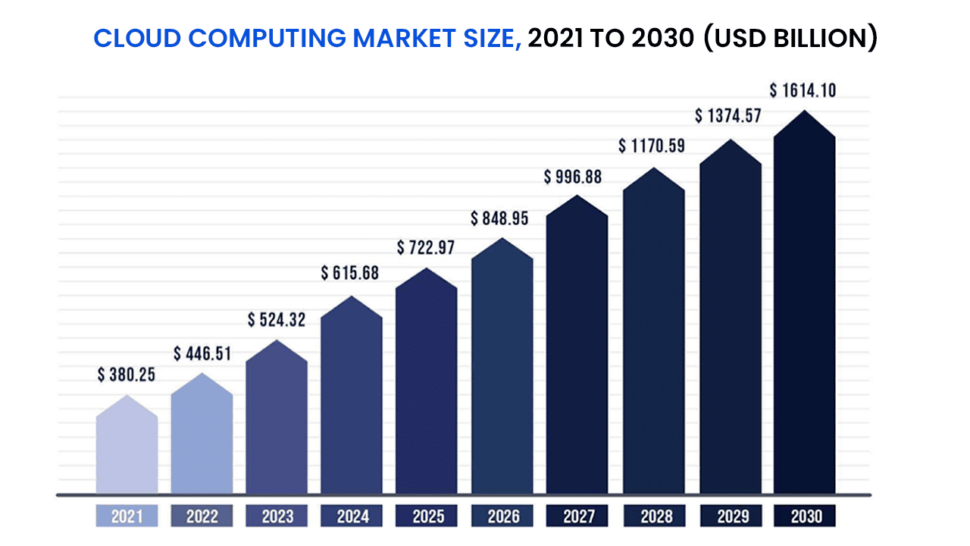
Some widely used examples of cloud computing in mobile apps are Google Drive and iCloud.
Integrating cloud computing in healthcare, e-learning, or social media apps helps support the functionality of advanced apps, leading to a memorable user experience.
The primary goal you must have with cloud computing in a mobile app is increasing the speed of file transfer, storage, and receiving through a simple yet attractive user interface.
Instant Apps
Instant apps are demo versions (of apps) that users can try without installing the application. These versions contain the code necessary to demonstrate certain functions and designs of the app.
For example, an instant app of a fintech application would include a feature for quick digital payments with a receipt. Google Play has Instant Apps, and Apple has App Clips for the same purpose. An instant app is essentially a pitch you can make to end users, helping them understand how your app is the answer to their problems and needs. This approach gives apps a competitive advantage in both app stores. Skyscanner and Buzzfeed apps are some examples you can check to see how instant apps work.
Hire a mobile app development company that can create the code for instant apps to highlight its USPs creatively.
Low Code Development
Low-code development is a development method that includes pre-written code, automation, and visual drag-and-drop UI components to simplify and accelerate app development. Building apps with traditional programming languages always requires experienced and expensive developers to do it right. Low code removes the need for such developers by making app development as easy as ordering food online.
Low-code development helps anyone build functional apps without knowing anything about coding. While vendor lock-in, unreliable security, insufficient customization, and limited resources are some of the prominent downsides of choosing low-code development, this trend will likely increase in popularity as most startup app development projects have a tight budget.
Ultra-wideband (UWB)
Ultra-wideband (UWB) is a bleeding-edge invention in the wireless technology industry, offering precise and fast real-time location tracking and data transmission. Apple iPhone 11, Galaxy Note 20, and Note 20 Ultra are currently the only popular devices that can support UWB technology. However, this technology will be a common factor in almost every smartphone released after 2022.
Google has already added an ultra-wideband (UWB) API in Android Open Source Project (AOSP) to help developers create apps that can work on Android smartphones with UWB hardware. This technology can help improve the functionality of apps with geolocation technology and asset-tracking requirements. You can also check the Nearby Interaction framework by Apple to see how developers can integrate UWB in iOS apps.
Neumorphism in UI
Neumorphism is one of the design trends in app development invented by using a mix of skeuomorphism and flat design to simplify the user interface while making it look creatively attractive. The Neumorphism design includes various shapes, color schemes, and shadows to make the UI elements (like buttons and icons) look as if they are behind the screen background.
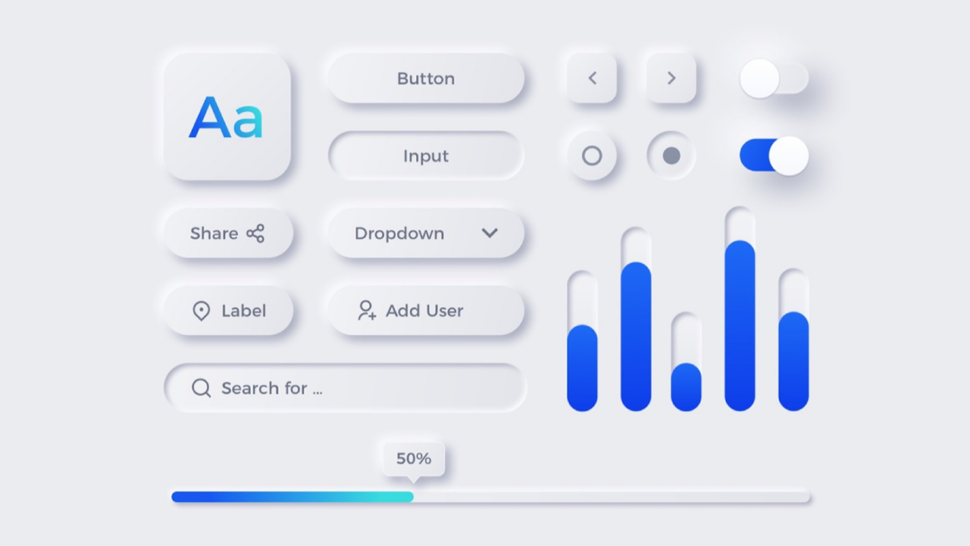
This design can add a contemporary look to any app while keeping the UI simple. Some examples of Neumorphism in UI are Tesla Smart App and Nike Shoes E-Commerce.
Voice-enabled Apps
Optimizing app UI elements like buttons, screens, and lists for the voice command technology of smartphones can give it another competitive advantage. For example, a telemedicine app that could open, type in the password, read prescriptions, schedule doctor appointments, and make payments with voice commands could prove highly convenient.
Voice-enabled apps will likely increase in the coming years as virtual assistants like Siri and Alexa are becoming the preferred choice of many customers for using their smartphones.
Touchless UI
A touchless UI is another benefit of voice-enabled apps that helps users give commands without touching the phone screen. However, a mobile app that could respond to the gesture of users is a futuristic approach to consider. Apps with gesture recognition will require a lot of planning and development hours. Gesture-based navigation may seem like a complex concept that the right developers can simplify for your business. The device sensor will determine the performance of such a UI, but the true potential of this technology is yet to be demonstrated through a mobile app. Thus, it presents an opportunity for your app to become the first notable trendsetter of touchless UI.
Be the Trendsetters
Knowing and implementing the ruling mobile app development trends will help your business succeed and survive in the app market. But building something truly unique and innovative can make your app a trendsetter in the industry. For example, you can easily build a food delivery app with Place Order and Make Payment features. However, providing videos for every dish that shows (in fast forward) the preparation of the chosen food items, how they are packed, handed to delivery executives, and how the delivery executive reaches a location could improve the user experience significantly.
It helps users see that the listed restaurants and delivery executives are trustworthy and reliable. Implementing concepts like this can help you add unique elements to your app that quickly turn into mobile app industry trends. Therefore, you must discuss the trending factors you can add to the app with your developers and do anything you can to make the app distinctive.
Frequently Asked Questions
Augmented and virtual reality are currently the most popular trends in app development.
Top app development trends in 2024 are Artificial Intelligence, 5G Technology, AR & VR, Beacon Technology, Blockchain, Foldable-device Optimization, IoT-enabled Mobile Apps, Wearable Device Apps, On-demand Apps, Mobile App Security, Super Apps, Mobile Wallets and Payments, Cloud Computing, Instant Apps, Low Code Development, Ultra-wideband (UWB), Neumorphism in UI, Cross-Platform App Development, Voice-enabled Apps, and Touchless UI.
AR and VR, mobile wallets, virtual assistants, and artificial intelligence are currently the most widely recognized trend in the mobile app industry.
Java, Flutter, Python, React Native, Swift, and Kotlin are some of the best technologies to choose from for mobile app development.





















.png)
.png)
.png)



Leave a Comment